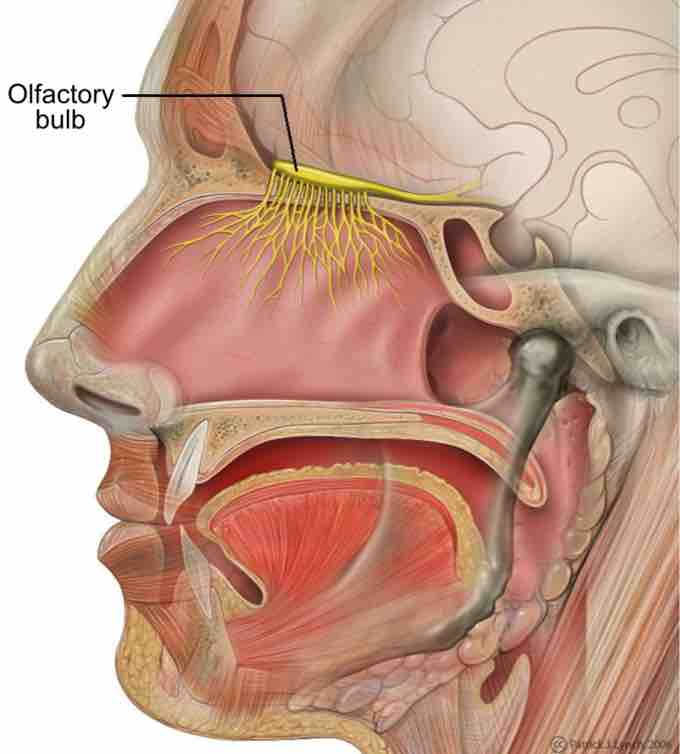The olfactory nerve, or cranial nerve I, is the first of the 12 cranial nerves. It is instrumental in the sense of smell. The olfactory nerve is the shortest of the 12 cranial nerves and only one of two cranial nerves (the other being the optic nerve) that do not join with the brainstem.
The specialized olfactory receptor neurons of the olfactory nerve are located in the olfactory mucosa of the upper parts of the nasal cavity. The olfactory nerves consist of a collection of many sensory nerve fibers that extend from the olfactory epithelium to the olfactory bulb, passing through the many openings of the cribriform plate of the ethmoid bone.
Olfactory receptor neurons continue to emerge throughout life and extend new axons to the olfactory bulb. Olfactory-ensheathing glia wrap bundles of these axons and are thought to facilitate their passage into the central nervous system.
The sense of smell (olfaction) arises from the stimulation of olfactory (or odorant) receptors by small molecules of different spatial, chemical, and electrical properties that pass over the nasal epithelium in the nasal cavity during inhalation. These interactions are transduced into electrical activity in the olfactory bulb, which then transmits the electrical activity to other parts of the olfactory system and the rest of the central nervous system via the olfactory tract.

Olfactory bulb
Sagittal section of human head showing the olfactory bulb.